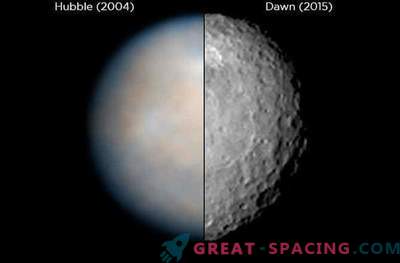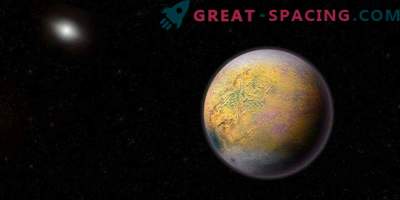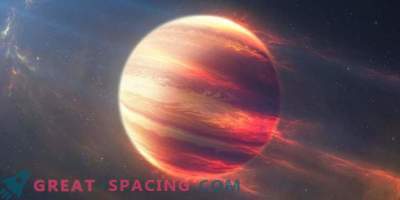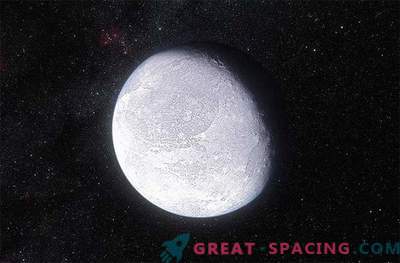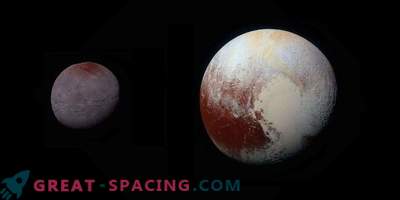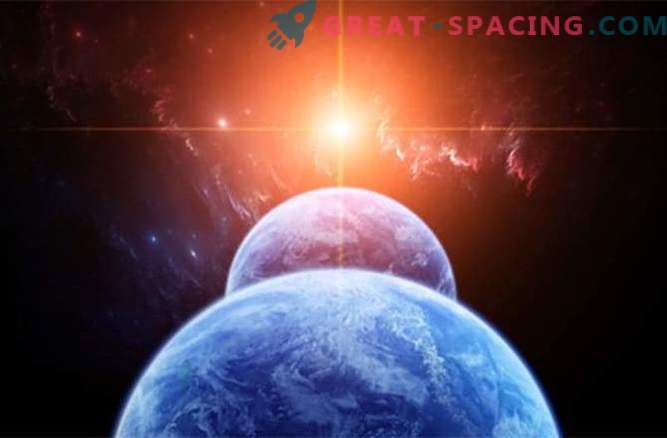
As astronomical search methods are becoming more sophisticated, one fine day we will be able to explore the atmosphere of distant exo-earth - a distant exoplanet that has liquid water on the surface and potential biosignature in the atmosphere.
But let's move this idea one step further.
There is one more thing that concerns exoplanetary research: there is a huge variety of alien worlds of all types and sizes.

A series of images of the system Pluto-Charon, made by NASA spacecraft
In a new study presented by the American Astronomical Society of Planetary Sciences at a meeting in Tucson, Arizona, researchers from the California Institute of Technology discussed the possibility of residential binary planets.
Probably the most famous example of what could be considered a binary system is the Pluto-Charon system. Although Charon is officially recognized as the largest satellite of Pluto, and not a component of the binary system, there is evidence that the dwarf planet Pluto and the Charon satellite are a binary system. Although this possibility was discussed as early as 2006, when the International Astronomical Union reviewed the planetary status of Pluto, in the end, the designation of the dwarf planet was left.
In the case of Pluto and Charon, their common center of mass is much higher than the surface of Pluto. Charon's gravitational impact is essential. As already noted, the two masses have very characteristic vibrations. For comparison, the Moon also affects the Earth, but the oscillations of the Earth-Moon system create a barycenter deep inside our planet near the core of the Earth. But what if somewhere in the Milky Way there are two worlds, of approximately the same mass, orbiting stars at a distance where temperature conditions will allow liquid water to remain on their surfaces?

An animation of Charon's motion around Pluto. Both objects rotate around a common center of mass.
In the process of forming stone objects around the star, it is possible that two large objects will be able to drift close enough to begin to interact gravitationally. This interaction can lead to the merging of both objects with the formation of a large planet. In addition, two objects can collide, picking up a huge amount of garbage.
Scientists believe that the latter scenario led to the formation of the only natural satellite of the Earth. The collided object probably bounced off the Earth and headed outside the solar system.
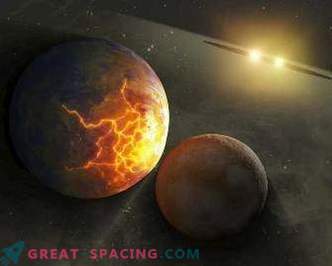
Binary systems through the eyes of an artist
But there is another development scenario in which two objects will interact with each other, but at the same time will not unite or collide. Instead, they will remain stable in their orbit around each other for billions of years.
"There is a good reason to believe that terrestrial binary planetary systems may exist," according to a press release from the California Institute of Technology. "If the two objects only touch each other, they can maintain their sufficiency. However, initially these objects should approach each other at a sufficiently low speed."
Through the use of a new computer model called “Hydrodynamic Smoothing of Particles”, a whole set of tens of thousands of interacting particles can be modeled. This method can be used to simulate the agglomeration of protoplanetary bodies and the formation of satellites. Although both objects will undergo tremendous tidal deformation, a planetary binary system of terrestrial planets is quite possible. Because of their close proximity, these planetary objects will be tidal blocked when one side of each world is constantly facing each other. We are familiar with this scenario through the Earth-Moon system. The moon is tidal blocked with the Earth, showing us only one hemisphere.
Although this is just fiction at the moment, this is a simulation at Caltech that a scenario in which two earth-like planets can be locked in a binary system is quite possible.
Standing on the surface of one of these worlds, it will be possible to observe how the second planet constantly hangs in the sky. Depending on how the binary system will be aligned with the star, it is also possible to have periodic planetary eclipses, when one world plunges into the darkness of its twin.
What if the alien life originated on both these worlds? And what if they became technologically advanced enough to travel between two planets? Although these reflections are purely hypothetical, they make us think that the presence of a second habitable planet in a binary system with your own can sprovatsirovanny feverish space race, which will overshadow the race between the USSR and the USA in the 1960s.

